
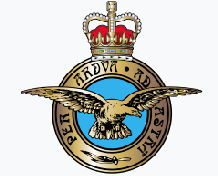
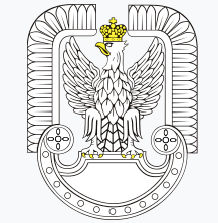

F/O Ryszard Zygmuntowicz, PAF
W/C Walter Ronald (Wally) Farley, DFC, RAF -2nd Pilot
F/O James Ansford Pulton RAFVR (161 Sqdn)- Gunner
Sgt Czeslaw Madracki PAF - Navigator (Flt Engineer?)
F/Sgt Bronislaw Karbowski PAF - Rear Gunner
F/Lt Antoni Henryk Voellnagel PAF - Flight Engineer
Sgt Leon Wilmanski PAF - Air Bomber
Sgt Mieczyslav Wojciechowski PAF - Wireless Operator
Peter Starisky (Peter Schuulmburg) NKVD agent
Sevolod (Visevolod?) Troussevitch (John Traun) NKVD agent
Franz Löschl - Austrian "passenger"
Lorenz Mraz - Austrian "passenger"
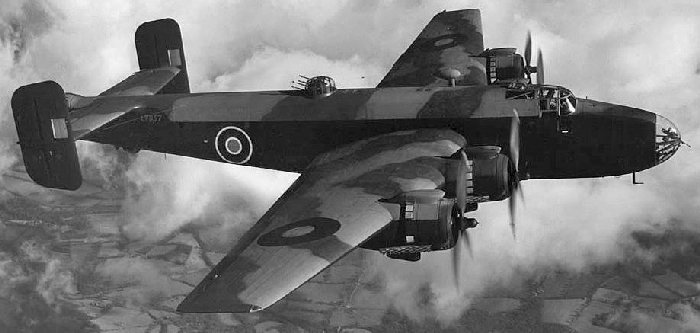
There is something very strange about the mission on which this aircraft from 138 Squadron at RAF Tempsford was lost, which is the reason I have given it a page of its own, despite it not crashing in the vicinity of Potton.
The many doubts or uncertainties of this mission begin with the record of the flight in the Aircraft lost on Allied Force’s Special Duty Operations & Associated Roll of Honour page 36. This gives it's departure airfield as Tempsford, and the Squadron as 138. However, I have some data which suggests it started its mission at RAF Tangmere (which would probably have meant a different squadron) and that it stopped at Tempsford to "pick up" it's four passengers. And very unusually, the records do not quote it's "Squadron Identity", e.g. "MA-W" for "LK207" elsewhere on this site. The first two characters ("MA" for LK207) are the squadron code (161 Squadron in this case) and the "W" is its call sign, "W-William". Not having a squadron code, we cannot tell for sure which squadron V9976 was attached to. The records for 138 Squadron do not include any time during the war with it based at RAF Tangmere, but it is known that Operation Anthropoid, the assassination of Heydrich, was launched from Tangmere in a 138 Squadron Halifax in December 1941. Was the omission of its identification markings deliberate? If so, for what concievable reason?
It is my belief that V9976 was a 138 Squadron Halifax based at RAF Tempsford which may have "picked up" some or all of the SOE agents at RAF Tangmere en-route to the continent.
The 21st April operation was the third or fourth attempt to carry it out, the first mission attempt being abandoned due to poor weather in England, and the second due to bad weather at the drop zone in the vicinity of Linz in Austria, forcing the aircraft to return to the UK with its agents still on-board. It is suggested in some quarters that the second mission was abandoned due rather to the inability of the flight crew to establish contact with the local agents "on the ground". There are also data that a third mission had been aborted before this fourth and last one. Apparently, the weather on the day of this last attempt was just as bad as at the first aborted try, but the description of the mission being of "first-rate military importance" had forced the Commanding Officer of 138 Squadron to carry it out regardless - it seems to have been rated as vitally important to Allied Intelligence and was codenamed "Whisky", sometimes spelt "Whiskey". After the previous two or three failed attempts, the CO apparently wanted to demonstrate his active support for the mission, and joined the seven other crew on the plane for this latest try. That alone was extremely strange, as such a senior person from the very secret group would carry information in his brain that would be very sensitive, and of immense value to the Germans should he have been captured and successfully interrogated. The Polish captain seems to have performed all the pilotting activities with Wing Commander Farley in the co-pilot's seat.
My doubts continue with the names of the four agents, or "passengers". Two are reported as being "NKVD", i.e. Soviet agents, the other two, Löschl and Mraz, were born Austrian, but left the country during purges against left-wing elements and I believe took Soviet citizenship, and also joined the NKVD. But the identifications are by no means clear of the two listed above as "NKVD Agent" and I do have some totally different names for them. These passengers were to parachute from the aircraft over the continent, and were told that due to the bad weather, they would need to leave the aircraft "over clouds", that is, without any visibility of the area where they were attempting to land, a situation almost without precedent as it was so dangerous and the risk of subsequent discovery by the Germans so high. The air-crew of this flight, and the previous attempted flights, were all hand chosen by the 138 Squadron CO, Wing Commander Walter Ronald Farley, DFC and were nearly all Polish Air Force; Farley and rear gunner F/O James Ansford Pulton RAFVR seconded from 161 Sqdn were the only RAF members involved in this last mission.
The initials NKVD refer to Naródnyiy Komissariát Vnútrennikh Del, located in the USSR (now Russia) as the "People's Commissariat for Internal Affairs".
The aeroplane crashed into mountains in the Tergensee area of the Bavarian Alps, and the first civilian on the scene (Carl Vogele, an Austrian) noted a briefcase with padlock and chains among the wreckage. He extracted it, and later handed it to the German authorities, where it allegedly rapidly made its way up the ranks that involved Goering and ended with Hitler. So, what was this flight and operation all about? We simply don't know, and perhaps, never will. Any records that are supposed to exist are closed and unavailable to the general public; it does not even seem possible to trace a repository that might contain them. Astonishingly, even modern comment appears to be censored - a few years ago, Sandy School children made a web-page that recorded the flight and what was known about it's circumstances, but even that modest page has disappeared from the net! If I remember correctly, the Biggleswade Chronicle recorded a visit by Farley's widow to Tempsford, to be shown some pieces of the Halifax wreckage that had been retrieved from the crash site. Today, I cannot find the web pages recording that event either! So whatever it was, British authorities seem to be still very cagey about it! In truth, this is most probably me looking for a conspiracy theory!
Rumours abound in the towns near the crash site. For example: on reaching the wreckage, Vogele found that one of the Soviet agents had survived the crash, but the agent then reached for his pistol and committed suicide. The police report mentions nine bodies in the wreckage, but it certainly took off with twelve personnel aboard. Police found gold on the bodies of two of the agents, but strangely not on the others. Vogele deliberately took a difficult and very different journey back down the mountain which would avoid meeting the police party, so had he helped himself to some of the gold and currency one would have expected to be on all the bodies? Even more intriguingly, the tail section of the Halifax had detached on impact and slid into a snow bank, which might have allowed the rear-gunner to survive the crash. Did Vogele indeed find him alive? Did the Englishman bribe the Austrian with the disclosure of where the gold could be found on the agent's bodies? Did Vogele loot the two of them he could reach, then take the survivor down the mountain by that different route, on some part of which, the Englishman conveniently disappeared - accounting for at least one of the missing bodies? This acccusation against Vogele is possibly false; the Bedfordshire Roll of Honour site lists F/O Pulton as being buried at Dornbach in the collective grave with the eight other recovered bodies of the airmen. Still the rumors appear: Had Vogele in fact murdered the Soviet agent "survivor" to silence him and then made up the tale of suicide to account for the bullet wound? Vogele was rarely sober when he had the funds to purchase alcohol, and was very voluble in the local inns and taverns after the war; he freely and openly bought his supplies using foreign gold coins and dared anyone to question where he had obtained them. He also had a very unsavoury local reputation, which meant he was believed capable of anything that might make him money. I must make it absolutely clear that these tales have no unambiguous proof to support them, and they may be a slur on the reputation of an innocent man. The evidence for all this foul play is only circumstantial, but it all adds to the overall mystery of this tale. And it doesn't end there.
Officially, there were no survivors of the accident, but three persons on board (according to the official crew and passenger list noted at the top of this page) don't seem to have been recovered from the wreckage. Officially, the Austrian civilian who found the briefcase was subsequently personally decorated by Reichsmarschall Herman Goering for his action in retrieving the papers, and received the sum of 500 Reichsmarchs in addition. That surely would not have happened had they been simple, non-important documents.
The image below shows the flight path it is believed the Halifax took from RAF Tempsford in England up to the crash at Tegernsee in the Bavarian Alps. I have underlined the name of a nearby town in fuchsia: Berchtesgaden. This town is very close to the location of Hitler's retreat in the mountains, Berghof: the "Eagles Lair". You will see why I think this worthy of note in the paragraphs that follow. It seems that when the aircraft crossed the border of German-occupied Luxembourg and entered German controlled airspace in the vicinity of the French town Metz, radar, or more likely sound recording, immediately detected the machine and its subsequent movements were continually monitored by the Nazis. The path was a masterpiece of navigation, since V9976 was required to fly as low as possible over mountainous terrain, between 5,000 and 10,000 feet altitude, at night. The navigator in the machine may have had as help a revolutionary piece of ground-scanning radar equipment which gave an indication of the terrain around the aircraft.
The Germans closely monitored the flight, and will have almost certainly noted that the aircraft was heading close to the Berghof. The Luftwaffe would later claim that the British aircraft had been shot down, but it seems more likely that the navigator's luck simply ran out and the radar system was just slightly confused by the proximity of a number of Alpine peaks. It would appear that the pilot Zygmuntowicz suddenly saw the ridge in front of him, and made a desperate effort to climb; it almost succeeded, but the Halifax hit the ridge between a couple of peaks less than 100 feet from clearance, at an altitude of around 6,000 feet above sea level.
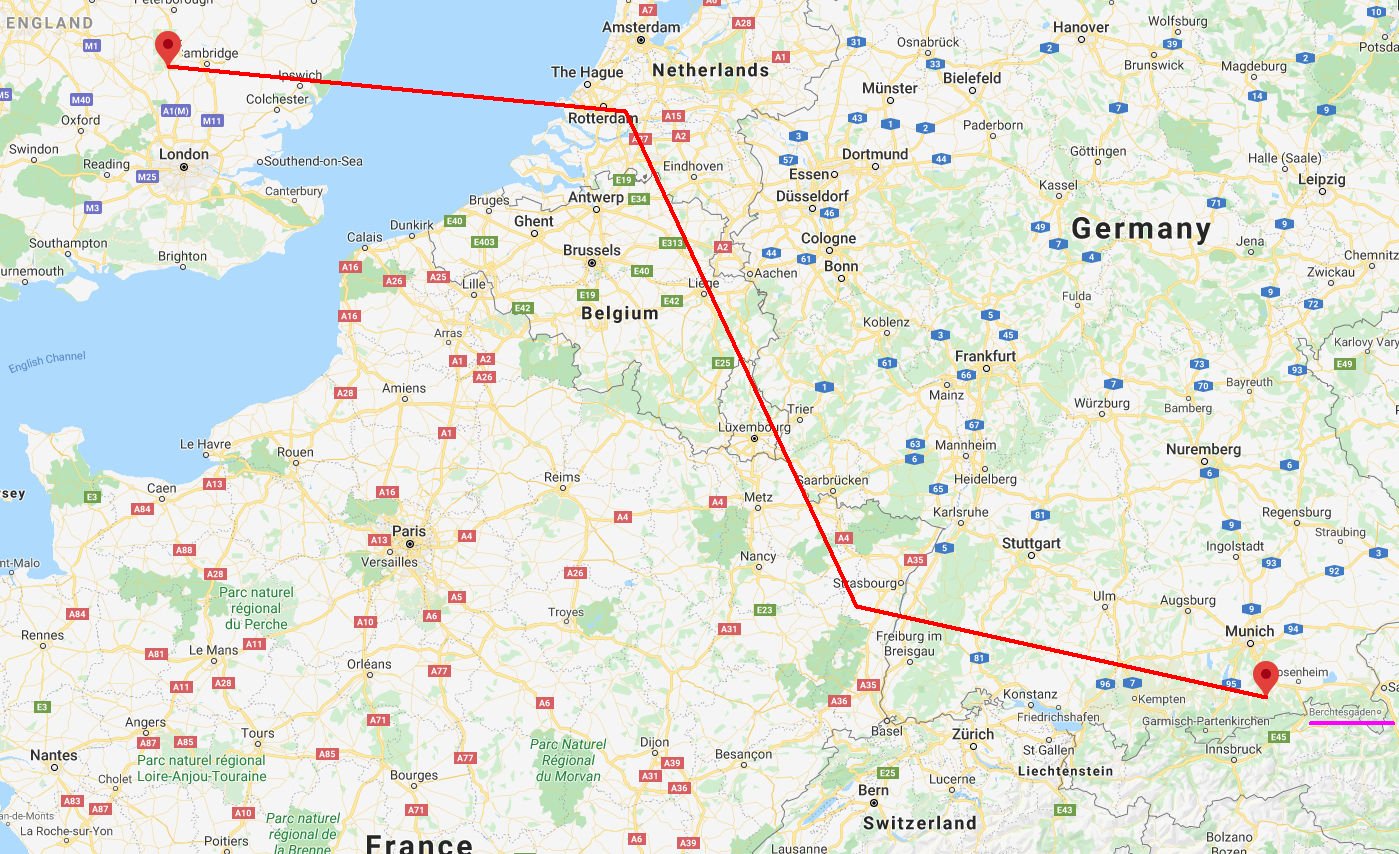
The "official" RAF records suggest that the "H2S" ground-scanning radar system was first introduced into an RAF aircraft in Halifax B Mk II serial V9977 sometime before June 1942, at which time V9977 was lost in a crash that also killed some highly valuable technicians and the system's Chief Designer, Alan Blumlein. "H2S" apparently performed its first experimental flight in V9977 on 23 April 1942. This suggests some problem with the dates if it was "H2S" that was installed in V9976 for the April 20th/21st flight. Either the records are inaccurate, or the fitting of the system into V9977 occurred earlier than has been released to public knowledge, and was perhaps considered sufficiently secret that the facts were not publicised. If "H2S" was indeed in V9976 when it crashed in Bavaria on 21st April 1942, then the "first experimental flight" of the system could not have taken place two days later in V9977 as the records show!
A more likely possibility is an inaccuracy in my source data, which is the pilot's family web page, linked to at the end of this page. In their text, they refer to the system as "The on-board ASU radar device was also used, which was able to read the contours of the terrain over which the machine was flying." [Wiki auto translation from original Polish]. I have not been able to find any reference to an air-borne ground scanning radar named "ASU" during 1942, and the dates seem to be wrong for it to be a mis-identification of "H2S".
The "H2S" system was also used in Coastal Command aircraft searching for enemy submarines on the surface of the sea, designated as "ASV" (Air-Surface-Vessel), but seems to have been introduced into that service in 1943, primarily on Wellington aircraft. Earlier versions of "ASV" had been evaluated before that date, but do not seem to have been taken up by RAF Bomber Command which retained the "H2S" system until the end of the war. So it does seem that if there was a terrain radar system in V9976, the date of the flight of V9976 suggests it was unlikely to have been either "ASV" or "H2S"!
Everything about this flight seems to be unusual and highly classified, so the questionable behaviour of the Austrian civilian, and the on-board radar system's identification and existence, are issues that simply fit in with all of the rest!
There is a set of documents at the National Archives at Kew, reference: AIR 81/13585, which was "opened" in June, 2020. Due to the current COVID-19 restrictions, I have not yet had the opportunity to visit the Archives to read the documents, which may shed some further light on the mission.
The images in this section are all taken from the pilot's family web-page, with the link given at the end of this article.
That the mission "Operation WHISKY" was important can be gleaned from four "Secret" British documents shown below. It is interesting to note the references to two other missions, "BRANDY" and "RUM", and to a less alcoholic degree(?) COFFEE. One might be tempted to surmise that the "liquid" relationship bewteen the code names suggest the three or four missions were all part of a grander scheme. In my opinion, however, such similarity in operation codenames would be madness; should the Germans have uncovered details about one of the missions, it would not take a genius to look at all missions where only the codename was known, but which had that apparent "connection", and then infer data about those other missions. To be sure, one would need to somehow uncover details of all these operations, and given the total lack of access to data pertaining to "WHISKY", I suspect the same difficulties would apply equally to researching the others. Wikipedia records "Operation Brandy" to have been a raid on Florø, Norway by British Commandos and Motor Torpedo Boats during the Second World War in the evening of 14th March 1943 - clearly a Naval/Army operation and a year later than this RAF Operation and obviously nothing to do with Halifax V9976. None of the other "beverages" seem to have any accessible data anywhere.
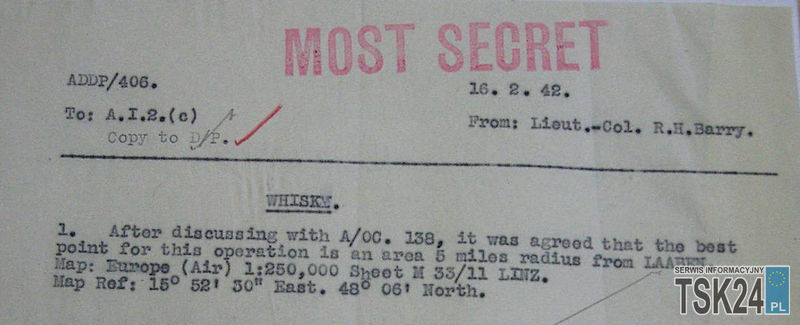
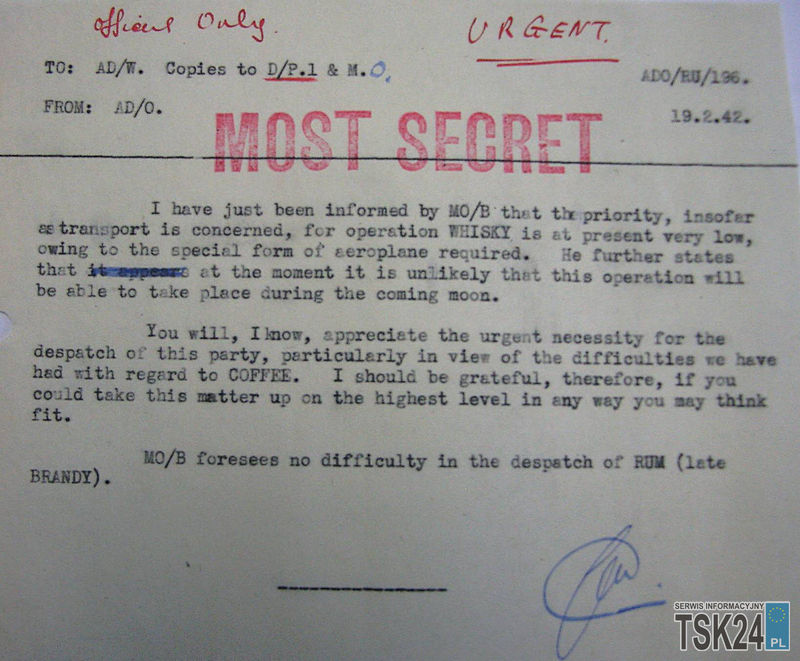
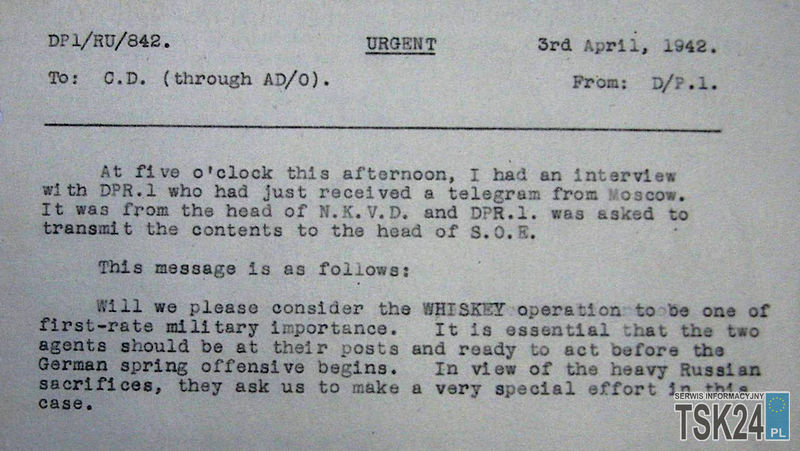
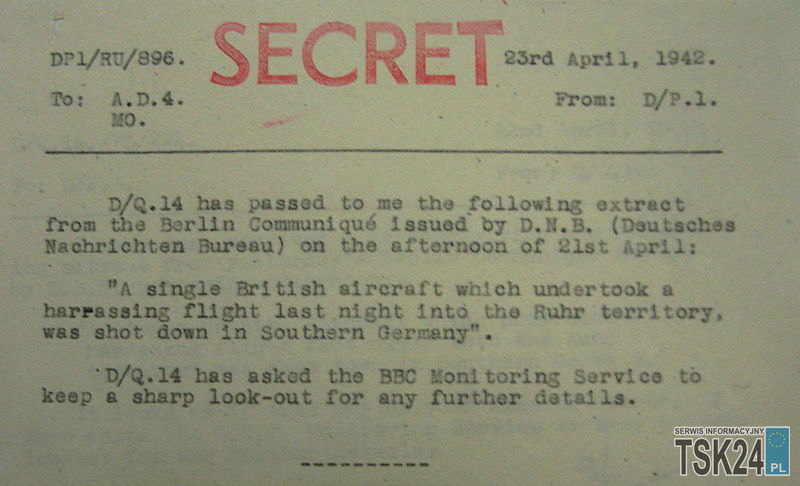
The belief among some Polish researchers is that Operation Whisky was an attempt at the assasination of Herr Hitler himself. Allied planners undoubtedly would have placed such a task high on their "to-do" list. During the war, however, some military targets may have been considered more important, such as removing the threat of the German Kaiserliche Marine battle cruisers. Of these, Graf Spee had been scuttled off the coast of Uruguay in 1939, and Bismarck had been chased down and sunk in May of 1941. Gneisenau was decommissioned in July 1942, and Scharnhorst was sunk on Boxing Day 1943. The main remaining naval threat was Tirpitz. British naval planners were forced to tie up valuable capital assets to be prepared to engage this vessel at short notice, should she venture out to attack convoys and act as a commerce raider. So the destruction of Tirpitz would be a very high priority; indeed numerous bombing raids were made on the vessel until it was sunk by Barnes Wallace's "Tallboy" earthquake bombs in November, 1944. By then, Hitler had lost all faith in his navy, but the threat posed by these vessels had been a thorn in British military flesh for almost the entire period of the war.
Targetting high-ranking Nazi officials and military officers was by no means a novel idea, but as far as is known was only ever carried out once. 138 Squadron, seemingly from RAF Tangmere, took Czechoslovakian soldiers Gabcik and Kubis to the continent where in an attack in May 1942, they fatally wounded an extremely senior German Officer, Schutzstaffel (SS)-Obergruppenführer Reinhard Heydrich. The ensuing brutality of the widespread reprisals resulted in an estimated 5,000 executions of civilians and religious leaders. It is quite possible that such barbarity towards non-combatants dissuaded the Allies from repeating such an operation (code named Anthropoid).
There is a temptation to associate the successful operation (Anthropoid) carried out in May 1942 with the failed mission (Whisky) which had been attempted just one month earlier. The mission codenames don't seem to have any connection, but as I have stated, in my opinion that would be a more sensible approach by the allied planners. So were both missions attempts at the assasination of senior German Military officials? It should be noted that Anthropoid left England in December 1941 with the attack occurring in May 1942, and Whisky left England in April 1942. It is likely that some time would be needed for any similar attack being part of Whisky to be set up and launched.
The assassination of Hitler may well have been considered as a possible operation with significant merit, following the success of the assasination of Heydrich. However, the crash of V9976 (and the loss of the contents of the briefcase?) may have ended the attempt for a couple of years. It is known that in 1944 such a plan was formulated as Operation FOXLEY; intended to use snipers to shoot the Fuehrer whilst he took his daily walk around the area. It was never implemented and was eventually abandoned due to Hitler never returning to Berghof after July 1944. Among the many logistical problems were that he was extremely well-guarded even before the attack on Heydrich, and this was immediately significantly strengthened after. Some allied personnel were not in favour of proceeding at all, concerned that even if successful, it would be ineffective for the heavy human cost it might well precipitate. Adolf Hitler's favourite location, Berghof was his home in the Obersalzberg region of the Bavarian Alps near Berchtesgaden, Bavaria, and for the first part of the war, it was out of the range of an Allied bombing mission, and later the inevitable high losses of such a long range mission without any fighter escort were considered unacceptable. Berghof was located in the extreme south-east of Germany, close to the border with Austria. It was elevated in the mountains and provided a formidable defensive position to any ground-based attacking force, and a large garrison of SS and other military surrounded it. Another Allied plan never taken up included derailing Hitler's train whilst he was travelling on it, or introducing poison to its water supply. The greatest aerial damage to the Berghof occurred late in the war as a result of long-range raids by British Lancasters (including the famous 617 Squadron "Dam Busters"), and was followed by it being burned by members of the Red Army. It was also significantly looted by various Allied soldiers when they arrived at the chalet.
Certain factors do support the idea of "Operation WHISKY" being an attack on Hitler's person.
There are some other factors to consider:
The images in this section are all taken from the pilot's family web-page, with the link given at the end of this article.
Second Lieutenant Zygmunt Zygmuntowicz, Ryszard's elder brother, was shot by the Nazis on April 10, 1940 in Firlej near Radom, Poland.
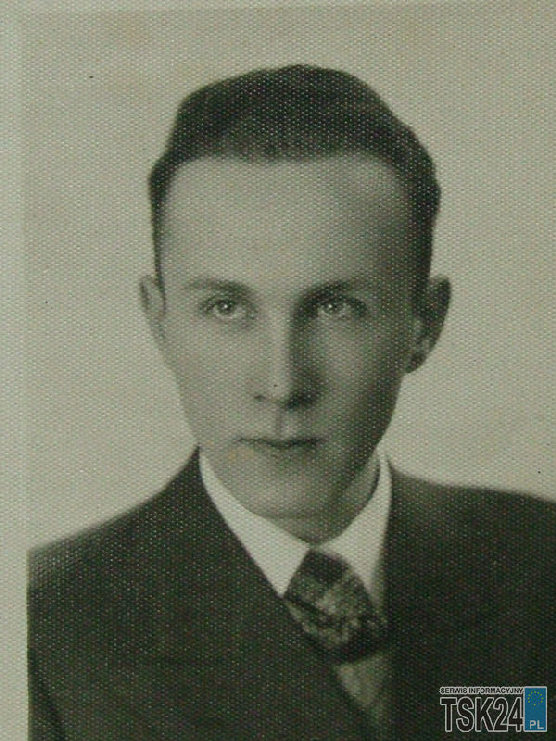
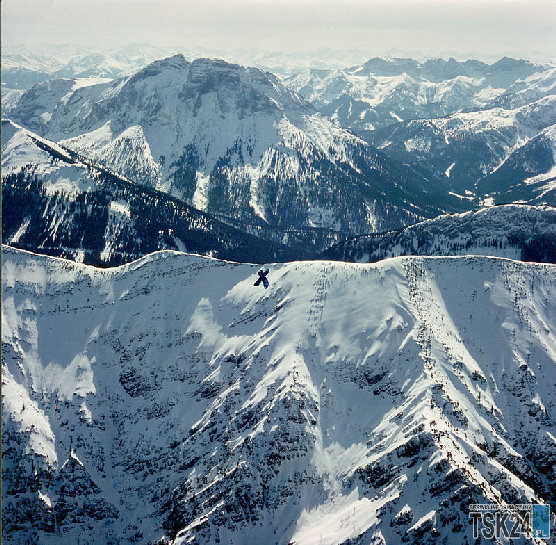
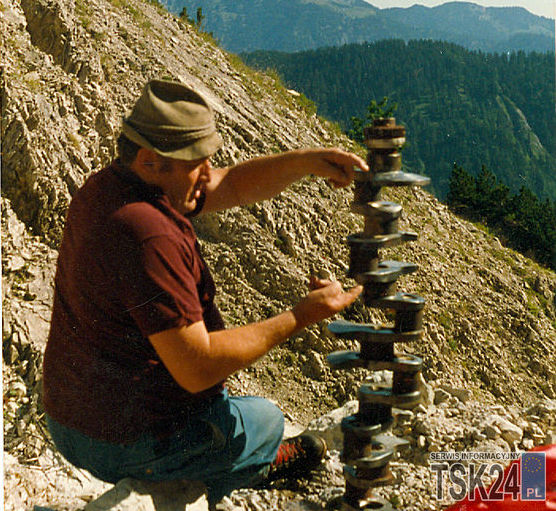
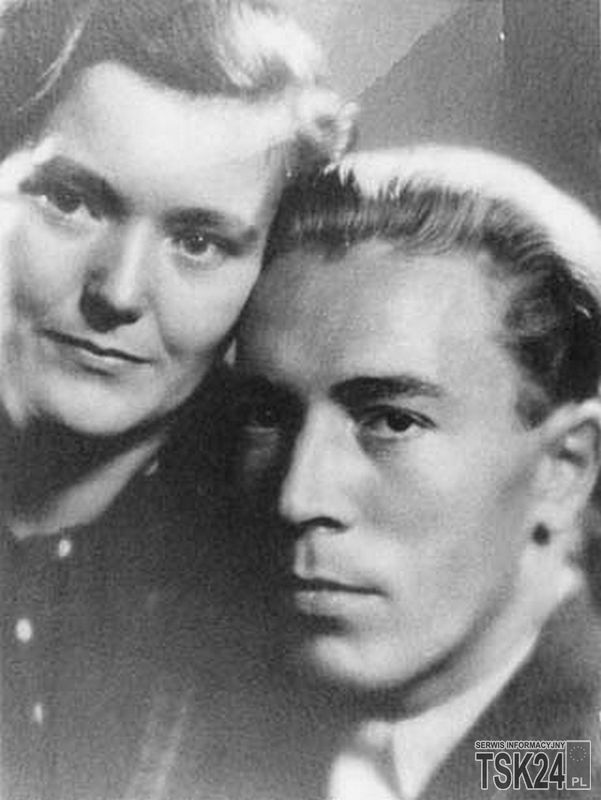
Lorenz Mraz was born on June 16, 1908 in Vienna. After the suppression of leftist Austrian chancellor Engelberth Dolfuss in February, 1934 he and his wife Hildegard, along with thousands of left wing Austrian civilians, relocated to Russia, and joined the NKVD organisation. Both Mraz and Löschl served together in the "International Brigades" in Spain during the civil war in 1936, and returned to the USSR in 1939.
The discovery of the superbly fabricated identity and travel documents on the bodies of the two Soviet agents led the German authorities to conclude that they were on an industrial espionage mission; this may or may not have been the case. Following historians have in some cases repeated this belief, without any really good evidence to support it against the many contradictions that exist.
In January, 1944, Lorenz Mraz's widow Hildegard was arrested by the Gestapo. After her husband's death, she had been trained in the Soviet Union for spying and sabotage duties, and parachuted into Poland near Warsaw from where she made her way to Austria. Her group commander was captured by the Gestapo, and under torture revealed the names and adresses of his two women agents who were then arrested. Hildegard spent 14 months in captivity before the prison was relieved by the advancing Red Army. Hildegard and her colleague revealed their spy status in the NKVD to a Soviet officer, but instead of being feted for their heroism, were transported back to the Soviet Union and arrested for being traitors - their crime? simply surviving their time as prisoners of the Gestapo, which was felt to have been due to them cooperating with the enemy. Both women were sentenced to 8 years in a brutal penal colony, only Hildegard surviving the harsh regime. She seems to have been pardoned for her "crimes" in 1965 and died in Vienna in 1997. She had been informed of the circumstances of her husband's death, and the location of his grave, only two years before.

I have very little information about this gentleman. He accompanied Mraz in the journey to Russia in the NKVD in 1934, and with his friend served in the "International Brigades" in Spain during the civil war in 1936. He too returned to the USSR in 1939 where he joined the NKVD with Mraz.
Many of the data and images on this web-page have been extracted from the web-page of the family of Flying Officer Ryszard Zygmuntowicz, PAF. I would very much like to know how they obtained the four "secret" message transcripts! I have requested via e-mail permission to reproduce the images on this web-page, but due probably to the language barriers, have not received any response. I have retained the "TSK24" logo on those relevant images.